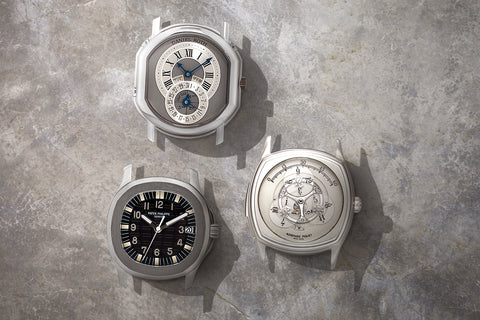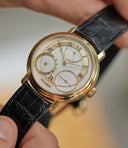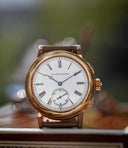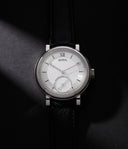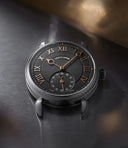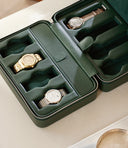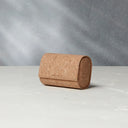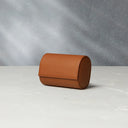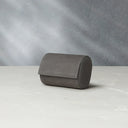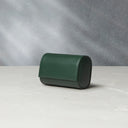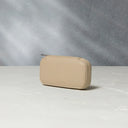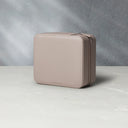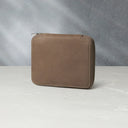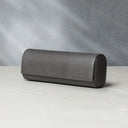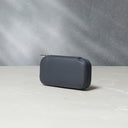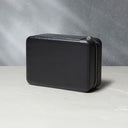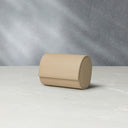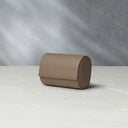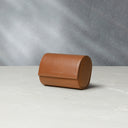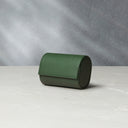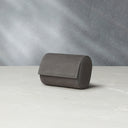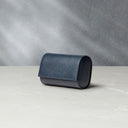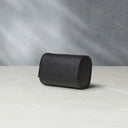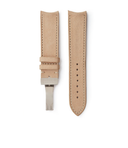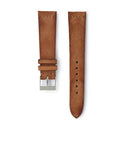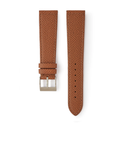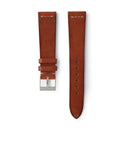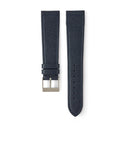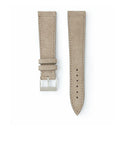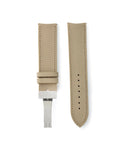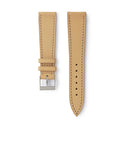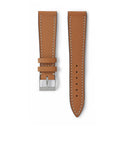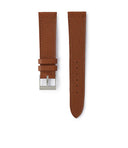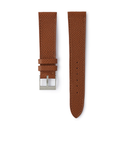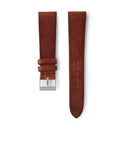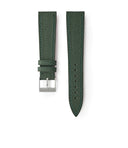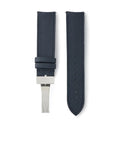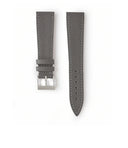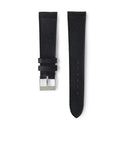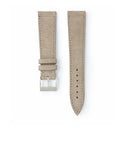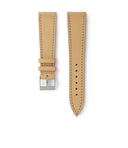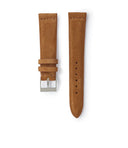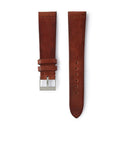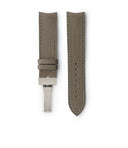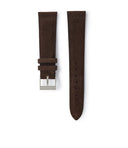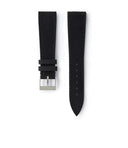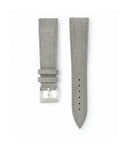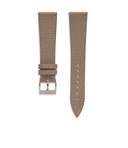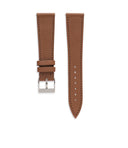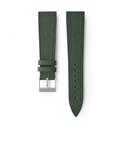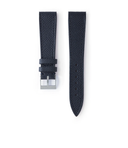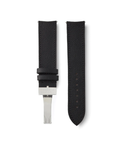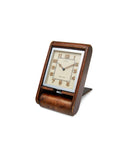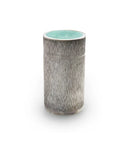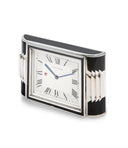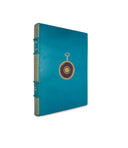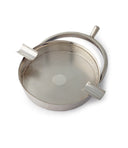This Patek Philippe reference 3796*, is the perfectly refined essence of the Calatrava, a watch that was born with the reference 96 back in 1932. While nearly identical in proportions, this much more modern example, is the only one we have seen to feature a white gold case and rose gold indices, hands and crown, making it possibly unique. The watch comes with the original white gold buckle from the brand and is furnished with a Certificate of Origin from Patek Philippe, confirming the unusual details of the watch.
Worth Reading
This Patek Philippe 3796, sold in 1991, traces it story back to the ref. 96, a watch that was first produced back in 1932. The famed Geneva house, badly impacted by the severe economic headwinds that were ravaging the era, had been given a lifeline in the form of new ownership under brothers Charles and Henri Stern. Their solution for rescuing the heritage brand was a wholesale rethinking not just of the business strategy but of the style of watchmaking Patek Philippe was known for. Almost no one wanted to be seen wearing timepieces with ornate, precious metal cases in the middle of a catastrophic economic downturn.
The solution was the reference 96, a time-only watch designed by David Penney, and almost Bauhausian in its simplicity. It featured a slim, round case; a flat bezel; and simple, flat lugs that originated from the mid-case and gently curved down. The seemingly simple formula would be widely credited with turning Patek Philippe’s fortunes around. It would become the very blueprint for dress watches that came after, taking on the moniker Calatrava, the term often standing in for this refined style of watchmaking.
In the 90 years since, the brand has experimented with this basic formula to varying degrees, sometimes even expanding on the design vernacular governing it. However, the Patek Philippe reference 3796 remains one of the most faithful executions of the language of the reference 96.
This “neo-vintage” example is particularly interesting. Supported by a Certificate of Origin from the brand, it is the only example we have seen of the reference 3796 with a 30mm white gold case and rose gold hands, numerals as well as crown.
The three-part case is classical in its execution. The flat, high-polished bezel sits atop a mid-case that is brush-finished. The lugs rising out of the mid-case, are polished on the top and brushed on the side, giving the watch a harmonious appearance, irrespective of the angle it is viewed from. The signed crown is also forged from rose gold. The lugs, 17mm apart, feature drilled-through lugs and the watch comes on a grey crocodile leather strap with a white gold buckle from the brand. The closed caseback wears brushed finishing, interrupted only by the engraved precious metal hallmarks.
The dial is definitely the point of interest, and possible uniqueness. The rose gold, crisply faceted hour markers constantly play with light. In between them runs a track of rose gold minute plots, with the ones corresponding with the hour marker of a slightly heavier weight. The rose gold, dauphine hands are also faceted. At 6 o’clock lies the subsidiary seconds, with simple black markers and a leaf-style seconds hand.
Powering it is the manual-wind calibre 215, with a straight-line lever escapement, Gyromax balance, and 18 jewels. The movement wears the Geneva seal.
Specifications
Closer look
| Brand: | Patek Philippe |
| Model: | Calatrava ref. 3796 |
| Movement: | manual-winding calibre 215 |
| Functions: | hours, minutes, sub-seconds |
| Case material: | white gold |
| Case diameter: | 30mm |
| Crystal: | sapphire front |
| Strap: | bespoke saffiano strap from our own collection, Patek Philippe alligator strap, Patek Philippe white gold buckle |
| Lug width: | 17 x 14mm |
| Year: | 1990 (sold) |
| Accompanying materials: | leather folder, fabric pouch, Certificate of Origin |
Condition
This Patek Philippe Calatrava 3796 is in excellent condition overall. The case and lugs show light superficial marks throughout, with a very light graze on the bezel between the ten and eleven o'clock position. The case proportions are strong and sharp, with crisp and defined hallmarks on the brushed caseback.
Warranty
The watch comes with a two-year, limited warranty from A Collected Man, alongside a lifetime guarantee of authenticity.
We stand by the quality of all of our pre-owned watches and mechanical objects. If something goes wrong, we’ll always strive to remedy the situation in a timely manner and to the best of our ability. The satisfaction and trust of our clients is of the highest importance, to everyone at A Collected Man.
All of our pre-owned watches have undergone thorough, non-invasive mechanical inspections and have been serviced, if appropriate, to ensure that they meet our highest standards of timekeeping and functionality.
Our pre-owned watches, unless stated otherwise, are covered by either a full or a limited twenty-four month warranty. This excludes any damage sustained due to improper use or accident. Due to their age, some pre-owned watches should not be subjected to the same conditions as when new.
Any of our pre-owned watches which have been serviced by their respective manufacturer, will carry the manufacturer’s servicing guarantee. This is separate and supersedes, the standard warranty offered by A Collected Man. Please see our Terms & Conditions for further information. You can write to us directly at enquiries@acollectedman.com, for further clarification.
A Collected Man is also an authorised retailer for a number of watchmaking brands. These watches are covered by the warranty from the original manufacturer.
We offer complimentary worldwide delivery on our watches. If ordering from overseas, delivery will depend on the value of the timepiece and the destination. All import taxes, duties and tariffs are the responsibility of the buyer.
If ordering from the UK before 1 PM, your watch will be sent the same working day. The courier will depend on the value of the watch, with all watches delivered the next working day.
Please note that pre-owned goods (in the United Kingdom) are subject to a marginal rate of VAT, which can not be reclaimed. For further information, please see here.
Enquire
Please fill out the details below and we'll be back in touch shortly. Thank you.
Join the List
Get notified as soon as new pieces from this brand are added to our collection.
A VISUAL GUIDE TO RARE CALATRAVAS
The Calatrava is often used as a byword for time-only dress watches by Patek Philippe, and while not known as such at the time, the Patek Philippe reference 96 would come to represent the archetype not just for a line that would come to be known as the Calatrava, but of understated dress watches in general.




Produced between 1932 and 1973, the Patek Philippe reference 96 was expressed through a wide variety of dial configurations, featuring no seconds, subsidiary seconds, and offset subsidiary seconds as well as centre seconds (thanks to a clever redesign of the 12’”120’s sub seconds incorporating an additional mechanism by Victorin Piguet that gave it its ‘indirect central seconds’ name). It has featured indices of all varieties – Arabic, Breguet, Roman, and precious stone – not to mention hands from dauphine and baton to pencil and leaf-style.
The success of the Ref. 96 resulted in a family of references all closely linked to the design of the original. The Ref. 570 was released in 1938; although an upsized rendition featuring a case measuring 35.5mm across, it is an example most enthusiasts agree closely follows the original formula. The Ref. 2457’s dimensions make it an even more faithful descendant of the Ref. 96. John Nagayama, a Japan-based watch dealer specialising in vintage Patek Philippe, also points to others such as the diminutive 28mm Ref. 437 and 438, and others such as the Ref. 2508, 2509, 2545 (32mm), 2555 (31mm) and 3439 (32mm), as examples of typical Calatrava models. John Reardon, Founder of Collectability, thinks others such as the 3796 and 3919 and more recent references like the 5196 also make the cut. Others wager that references such as the 5026, with its flat bezel and subsidiary seconds register, albeit offset, also fall within the historical parameters of a Calatrava.


Patek Philippe Watches at A Collected Man
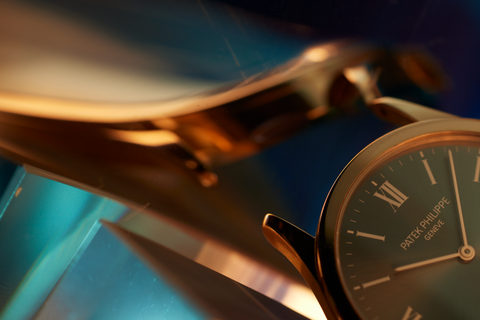
A Visual Guide to Rare Patek Philippe Calatravas
By Raj Aditya Chaudhuri
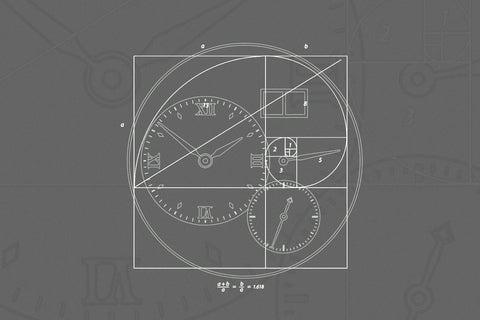
The Balance of Symmetry and Asymmetry in Dial Design
By Felix Scholz
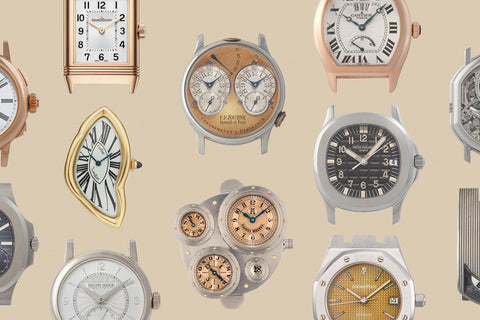
Making the Case for Round and Shaped Watches
By Josh Sims
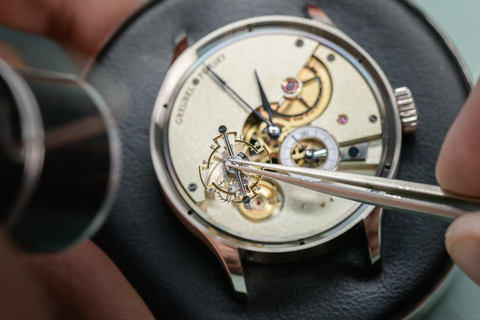
The Tourbillon and why it still matters
By Russell Sheldrake
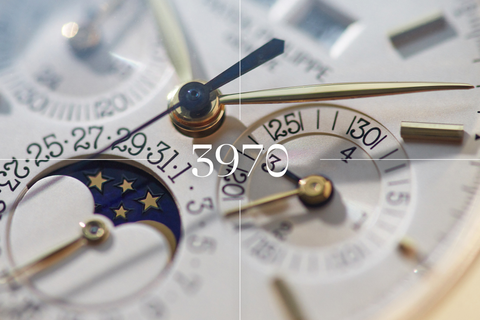
A Collector's Guide: The Patek Philippe 3970
By Russell Sheldrake

A Collector's Guide: Patek Philippe 3800 Nautilus
By Russell Sheldrake
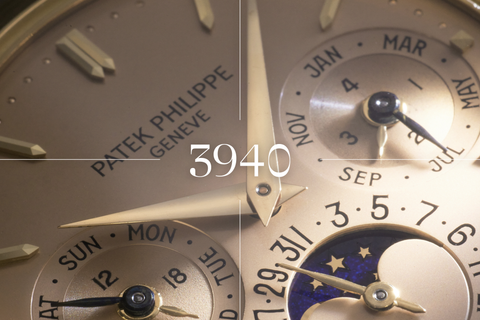
A Collector's Guide: The Patek Philippe 3940
By Russell Sheldrake
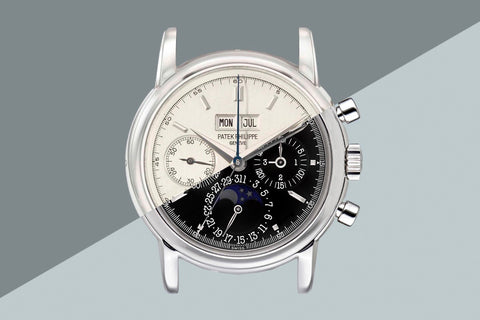
What Makes a Transitional Watch?
By Russell Sheldrake
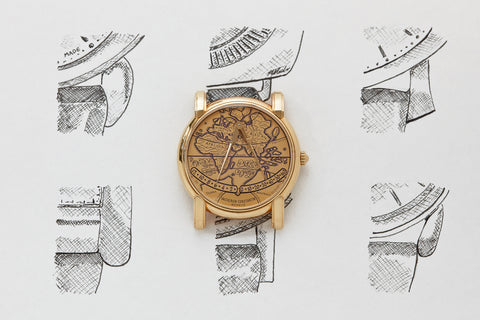
Six Collectors Choose their Favourite Lugs
By Russell Sheldrake
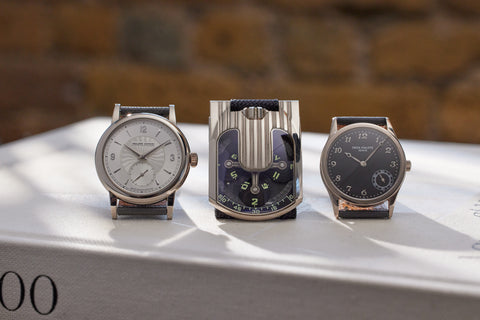
What Is Independent Watchmaking?
By A Collected Man
